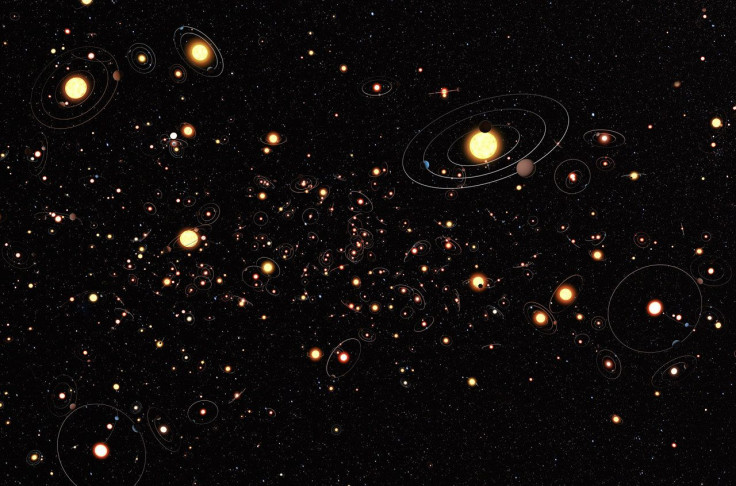This 'Planet' With 3 Stars Is Actually A Star; Scientists Retract Paper
KEY POINTS
- Researchers announced the discovery of a planet with three stars in 2016
- They retracted their paper last Friday after studying the star system further
- They hope their work could help improve astronomy
A team of researchers is retracting their paper about a "planet" with three stars after finding that the exoplanet is actually a star in itself.
The researchers originally published their findings in the journal Science in 2016. In it, they described the discovery of a planet four times the mass of Jupiter in the triple star system called HD 131399. The planet was believed to be orbiting one of the stars while the other two were farther away. The researchers described the "unusual arrangement" as "puzzling" at the time.
However, just a year later in 2017, another team of researchers published a paper in The Astronomical Journal, suggesting that it isn't actually a planet. Instead, it's possible that it's a star that was moving "unusually fast" in the background, along a path that actually coincided with the star system, according to Phys.org.
"When compared to predicted background objects drawn from a galactic model, we find this proper motion to be high but consistent with the top 4% fastest-moving background stars," the authors of the 2017 paper wrote. "From our analysis, we conclude that HD 131399 Ab is a background K or M dwarf."
The team behind the 2016 paper retracted their research article on April 15. Citing the 2017 paper, the researchers noted the discovery of the exoplanet might have been a "false positive." They conducted additional observations of the system over a longer period of time and found that the object was, indeed, not an exoplanet but a "background source."
"We are therefore retracting the Research Article," they wrote. "All authors agree with this retraction."
Apart from the speed with which it was moving, which matched the pace of the star system, there was another factor that might have led to the misidentification. One of the authors of the original paper, Kevin Wagner of the University of Arizona, told Space.com that it was likely a "very red star" and the red color made it look quite like a planet.
"Each of these would be quite a rare occurrence on their own," Wagner told Space.com. "The combination of these two low-probability characteristics of the background object are what led us to misclassify it as a planet."
The researchers' work shows the risks of assuming stationary backgrounds in star systems. The team hopes that the experience would help improve astronomy, Phys.org reported.
Just last March, for instance, a team of researchers found three "planetary false alarms." They realized that the signals were much too large to be of planets and determined that the objects were actually stars.

© Copyright IBTimes 2025. All rights reserved.






















